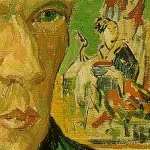
Happy new year, everyone, wherever you are in the world. It's been a while since I've posted, so I figure it's time to get cracking! And that's good, because a subject came up in one of my classes last semester that I've been wanting to write to you all about. As I've mentioned on this blog before, one of the courses I teach at the University of Central Arkansas is called Forms of Fiction. It's not a literature course, but we certainly do read plenty of short stories as we survey some of the genres contemporary fiction writers work in. One of those genres (of course) is historical fiction; and I was pleased to see that this past semester more of my students took up the challenge of turning the research I assigned into finished historical fictions. One of the more interesting of these fictions was based on the Dancing Plague of 1518, a truly bizarre episode that occurred in Strausborg, France and resulted in hundreds of people dancing involuntarily for days on end, perhaps as many as a hundred of whom finally succumbed to stroke, heart attack, or exhaustion. The Plague started with one inflicted woman, known as Frau Troffea, who began dancing a jig in a street in Strausborg. Others joined her and within a month's time up to four hundred people were dancing and, here's the rub, they seemed unable to stop despite their apparent desire to stop. Contemporary accounts refer to looks of "fear and desperation" on the faces of the dancers. Strangely (well, is anything not strange about medicine in the 16th century?) the best answer medical practitioners could come up with was to encourage the dancers to dance more! They cleared fields and opened dance halls; they hired musicians to play. Apparently the thought was that in this way the illness would work itself out. All that happened, however, was that more people danced and many people died.
In my student's story, Frau Troffea occupies a fittingly prominent position. She is set to dancing by St. Vitus, whom she has unwittingly offended. (According to an old Catholic superstition, crossing St. Vitus can lead to compulsive dancing.) It was a promising, if somewhat rushed story, but whatever the story's deficiencies I am grateful to its author for introducing me to this fascinating case. Turns out that British historian John Waller has written a recent book about it, called The Dancing Plague: The Strange, True Story of an Extraordinary Illness (2009). Of course, the question anyone must ask is, Why did the people dance? There are various modern explanations, medical in nature, for the phenomenon, none of which completely satisfy. Waller's best guess is mass psychogenic illness resulting from several years of extreme psychological stress, malnutrition, and disease. I'm not sure that explanation completely satisfies either, but unless you want, like my student, to blame it on St. Vitus, that's what you're left with. In any case, it's a fascinating subject and well worth looking into. Thanks to Karen Cochrum for my introduction to this Weird But True tale.













0 comments:
Post a Comment